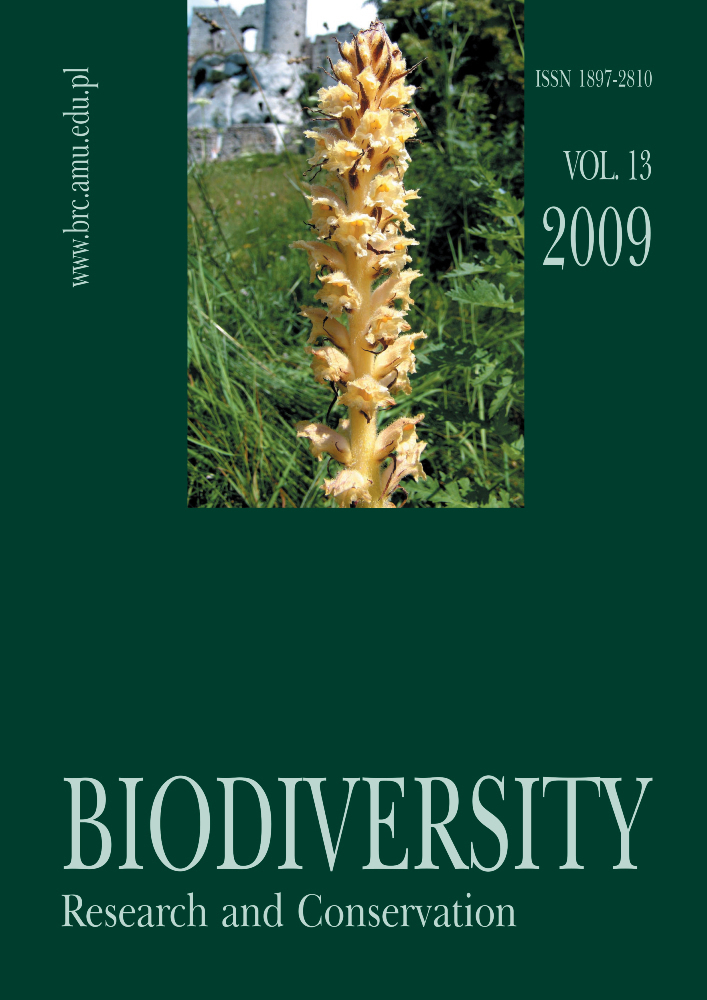Abstract
Synanthropization of plant cover, connected with urban development, contributes to the appearance of specialized ruderal plant communities, adapted to habitats exposed to human influence. A lot of published data have focused on urban flora, but the aesthetic aspect of perennial and temporary plant communities at urban sites has been frequently omitted. Currently the practical use of such plant communities is limited by the lack of descriptive information available. In this study great attention has been paid to variability of urban communities, defined by: aesthetic aspects, flowering period, and colour variability in flowering communities. In Szczecin, Artemisio-Tanacetetum vulgaris, Calamagrostietum epigeji, Dauco-Picridetum hieracioidis, and Rudbeckio-Solidaginetum have been recognized as especially decorative. They could be used to reduce the costs of establishing and maintaining urban green areas.
References
Chmiel J. 1993. Flora roślin naczyniowych wschodniej części Pojezierza Gnieźieńskiego i jej antropogeniczne przeobrażenia w wieku XIX i XX, cz. 1 i 2. Prace Zakładu Taksonomii Roślin UAM w Poznaniu 1; 1: 1-202, 2: 1-212. Wyd. Sorus, Poznań.
Chyliński W. & Fornal B. 2005. Plant cover characteristic of closed viaducts in Warsaw. Annals of Warsaw Agriculture University, SGGW 26: 73-81
Janecki J. 1983. Człowiek a roślinność synantropijna na podstawie Warszawy. SGGW-AR, Warsaw, pp. 6-58.
Juśiewicz-Swaczyna B. & Endler Z. 2003. Flora synantropijna Brodnicy. 37 pp. Wyd. UW-M, Olsztyn.
Kim Y-M., Zerbe S. & Kowarik I. 2002. Human impact on flora and habitats in Korean rural settlements. Preslia, Praha 74: 407-419.
Matuszkiewicz W. 2006. Przewodnik do oznaczania zbiorowisk roślinnych Polski. In: J. B. Faliński (ed.). Vademecum Geobotanicum 3, 537 pp. Wyd. Nauk. PWN, Warszawa.
Mirek Z., Piękoś-Mirkowa H., Zając A. & Zając M. 2002. Flowering plants and pteridophytes of Poland. A checklist. In: Z. Mirek (ed.). Biodiversity of Poland 1, 442 pp. W. Szafer Institute of Botany, Polish Academy of Sciences, Kraków.
Rutkowski L. 2004. Klucz do oznaczania roślin naczyniowych Polski niżowej. Wyd. II, popr. i unowocześione, 814 pp. Wyd. Nauk. PWN, Warszawa.
Sowa R. 1964. Roślinne zespoły ruderalne na terenie Łodzi, pp. 10-21. Łódzkie Towarzystwo Naukowe, Łódź.
Sudnik-Wójcikowska B. 1992. Studies of flora synanthropization. Flora 187: 37-50.
Wojcieszczuk T. 1980. Ocena stopnia zasolenia gleb miejskich solami chlorkowymi i ich oddziaływanie na drzewa oraz możliwości zapobiegania skutkom nadmiernej akumulacji soli. AR, Szczecin. pp. 1-26.
Wróbel M. 2006. Origin and spatial distribution of roadside vegetation within the forest and agricultural areas in Szczecin lowland. Pol. J. Ecol. 54: 137-144.
Wysocki CZ. & Sikorski P. 2009. Fitosocjologia stosowana w ochronie i kształtowaniu krajobrazu. 498 pp. Wyd. SGGW, Warszawa.
Zając E. 1974. Ruderal vegetation of the Bielsko-Biała town. Monogr. Bot. 40: 1-87.




